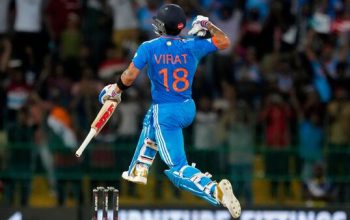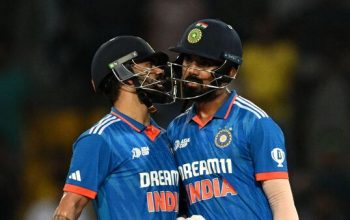Jostling for the franchisee rights will be close to 17 bidders, who have submitted their technical bids—or documents for eligibility scrutiny—on Monday. Over 30 companies had picked up the tender documents, including the team owners of all the 10 franchises of the men’s IPL.

View Full Image
While team owners of Chennai Super Kings, Gujarat Titans and Lucknow Super Giants have not submitted their technical bids, signalling a lack of interest, the remaining seven team owners have got a green light from BCCI after their submissions.
Other companies who submitted technical bids and will likely be on the bidding table on Wednesday include the Adani Group, Capri Global, Amrit Lila Enterprises (Kotak Group), Torrent Group, Lancer Capital (Glazer Family), Haldiram’s, and Shriram Group.
The five franchises will be decided from a list of 10 cities—Delhi, Mumbai, Kolkata, Chennai, Bengaluru, Ahmedabad, Dharamshala, Guwahati, Indore, and Lucknow—and the gap between the demand and the supply may result in some irrationally exuberant and financially unviable bids, feel some owners and experts. The BCCI is counting on it.
Experts Mint spoke with said the bidders will have various reasons to be a part of the league—ranging from a desire to support or be seen supporting women’s cricket to getting a seat on the same table as the top team owners, and from expanding their brand into certain markets to just be a part of the IPL ecosystem. “Profitability and economic sense will certainly not be a part of it,” said one of them.
A top executive of an IPL team, who has placed the technical bid, said, “While the BCCI has not kept any reserve price for the auction, there is enough interest and the kind of hype they have managed to create, I don’t think team owners will want to take any chance. We would like to be financially prudent and bid with an eye on the economic viability of the league, but we have seen in the past how bids for IPL franchises have gone completely berserk.”
He was hinting at the RP Sanjiv Goenka Group’s eye-popping bid of ₹7,090 crore for the Lucknow franchise in 2021. The second highest bid was CVC Capitals’ for the Ahmedabad franchise at ₹5,600 crore, outbidding the Adani Group’s ₹5,100 crore bid.
In stark contrast, the initial IPL franchises had gone for a much lower amount. Reliance Industries had paid the most—$111.9 million (around ₹447.6 crore then)—for the Mumbai franchise in 2008. United Breweries, then owned by Vijay Mallya, picked up Bangalore for $111.6 million ( ₹446 crore). The base price was kept at $50 million, and one dollar was equivalent to 42 rupees then.
In 2010, Sahara Group acquired the Pune franchise for $370 million ( ₹1,702 crore), and a consortium named Rendezvous Sports World picked up the Kochi team for $333.3 million ( ₹1,533 crore).
The executive said: “Unfortunately, the winning bids for the women’s IPL franchises will be a function of deep pockets and how much losses they are willing to take.”
According to Mint’s analysis based on industry estimates for potential ad revenue share and other revenue and cost sources—admittedly subjective—the only way for a team owner to break even within the first five years is if they get the franchise rights for zero cost. Team rights are for a lifetime, however, and capital that has a long-term view with an appetite to absorb losses in the initial years might find a way to make the math work, with a fair bit of optimism built into the modelling.
According to the current format, all franchises will earn an equal share from the central revenue pool. The board will share 80% of its revenues from the league, which includes media rights and ground sponsorships.
Viacom18 has already picked up the media rights for ₹7.10 crore per match, while the BCCI is expected to sell sponsorships worth ₹250 crore for five years.
According to the calculation, each franchise will receive around ₹30-32 crore from this central revenue pool per year. Apart from this, they can sell team sponsorships—front and back of the jersey, leading arm and leg, non-leading arm, back of the helmet, etc., for another ₹10-15 crore per year over the next five years.
“In all, our estimate after the media rights sale is that the teams can earn revenue of ₹40-47 crore per season,” said a senior executive at another IPL franchise, which is seriously considering bidding for the rights. “Now we know the revenue potential, and we have worked backwards on cost analysis.”
Two existing franchise owners told Mint that to run a WIPL franchise, where the player purse is kept at ₹12 crore in the first year, the overall cost will be ₹25-35 crore, excluding the licence fee cost.
“There is the player fee, branding and marketing cost, and the management cost. All put together, it will be in the range of ₹25-35 crore for someone who already has a franchise and can leverage the synergies,” said one of them, requesting anonymity. “If I go by current estimates, we can make ₹10-12 crore per year if there is no franchise fee, but for a newcomer, it will be losses from the beginning. Now comes the question of the franchise fee. Can I get a franchise for ₹100-150 crore ( ₹10-15 crore per year)? Then I will not just break even but might book some profit in the first five years, but if it is more than ₹150 crore, it won’t be profitable.”
BCCI, internally, is expecting the bids to cross the ₹1,000 crore mark, given the interest.
According to a back-of-the-envelope calculation, at ₹1,000 crore, the bidder stands to lose approximately ₹400-500 crore in the first five years, which a BCCI official pointed out as a “small amount in the larger scheme of things”.
“We have already seen the media rights value, which is a significant one for women’s cricket,” said the BCCI official. “If you see, most of the initial IPL teams were in a loss in the initial years, now their valuation is sky high, and all of them are making profits of over ₹400 crore per season. Many of them today own loss-making franchises in overseas leagues. I don’t think serious players will have any doubts about the value WIPL will generate in the longer term.”
It’s hard to calculate the 10-year outlook as the value of the next media rights cycle will depend on the performance of the league as well as the distribution landscape of TV and digital penetration.
Meanwhile, for the current cycle, media rights owner Viacom18, which outbid Disney Star with a significant margin, is expected to lose over ₹600-650 crore in the next five years, according to Mint’s estimates.
A senior sports broadcaster, analysing the cost of broadcasting, the league, said, “ ₹951 crore that Viacom18 is paying to the BCCI is just for the rights. Over and above, there is a cost of production of around ₹40 lakh per match, which comes to around ₹55 crore over the 134 matches in the next five years. If you add the cost of bank guarantee, insurance, and other production, it will be another ₹150 crore. And they will have to spend close to ₹20 crore per year on marketing the league to build it. Overall, it’s going to cost them ₹1,200-1,250 crore,” said the executive.
Now on the revenue front, ad revenue from the league over the next five years is expected to be around ₹400-450 crore, while projected revenue from distribution and subscription—both TV and digital—is around ₹200 crore as per various estimates.
Thus, total revenue for the media rights holder is expected to be in the range of ₹600-650 crore over the next five years.
Ultimately, it might be an auction rife with the potential for buyer’s remorse.
Download The Mint News App to get Daily Market Updates & Live Business News.







